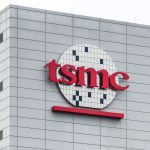In numerous discussions and interviews, Intel has discussed the company’s plans to grow and achieve the top position in chip manufacturing with rival companies such as Samsung and TSMC, two of the largest semiconductor plants globally. More recently, Intel stated how they were open to building chips for their competitors, AMD and NVIDIA, at their own fabs.
Intel sets itself to become one of the top chip foundries in the world by 2030
TSMC, the leading semiconductor foundry, with Samsung Electronics coming in second place, is the market share sector that Intel plans to achieve in the next decade, if not sooner. TSMC holds almost fifty-four percent of the market, with Samsung at slightly over sixteen percent of the share. Smaller factories, such as UMC and GlobalFoundries, are now lagging behind Intel at 6.9% and 5.9% of the market, respectively.
Our ambition is to be the No. 2 foundry in the world by the end of the decade, and [we] expect to generate leading foundry margins.
— President of Intel Foundry Services, Randhir Thakur, during a conversation with the newswebsite Nikkei Asia.
While Intel waits for the acquisition of Tower Semiconductor to complete next year, the company has already amassed a revenue of $576 million, to which the company will then put $1.5 billion of revenue each year into the company’s IFS business group. However, to achieve this goal, Intel must create aggressive business tactics to fulfill its mission. This will combine the creation of next-gen process technologies and new cutting-edge capacities for its IFS clientele, remain competitive with TSMC and Samsung with the positions once held by Tower Semiconductor alone, and continue to meet orders accessed from clients that generally look to the top two foundries for chips, and also smaller companies as well.
Intel is bullish with its massive production volume of chips in current 18A technology, which will continue to mature and flourish into 2025. The company is also focused on High-NA EUV tools for their 18A technology. For semiconductors, the company continues to build more fabrication plants for its 20A modules, with two constructed in Columbus, Ohio.
Outside US borders, Intel is also building a four-capable module at its Leixlip, Ireland location and beginning construction of their new fab in Magdeburg, Germany. The company is working with local governments to invest within the countries and partners such as Brookfield to invest close to $100 billion in facilities over the coming years.
Image: Ann Wang/Reuters
Intel has also adjusted spending by $2 million over the last year to use that extra amount to invest in new semiconductor creation to match Samsung.
The locations within which Intel has made connections have been advantageous for the company. Locating foundries outside of sectors that TSMC and Samsung are founded in assists with gaining the company more availability with enterprises to save on regular expenses that arise with locations in South Korea and Taiwan. Also, businesses might find that risk management would be limited by betting on Intel over TSMC or Samsung.
As we have engaged with foundry customers since launching IFS, it has become abundantly clear that many of these companies see the need for a more resilient and geographically balanced semiconductor supply chain.
— Randhir Thakur to Nikkei Asia
Lastly, the company will need to take risks with investments in new hardware, devices, and technology if it wants to keep its position or achieve the top fab globally.
The post Intel Says Its On Track With “Aggressive” 2030 Foundry Goals, Aiming The 2nd Spot By The End of The Decade by Jason R. Wilson appeared first on Wccftech.







